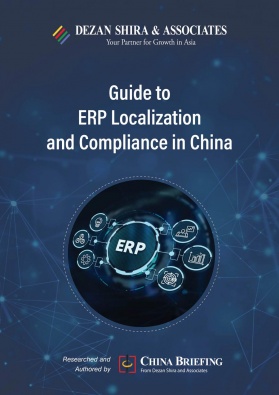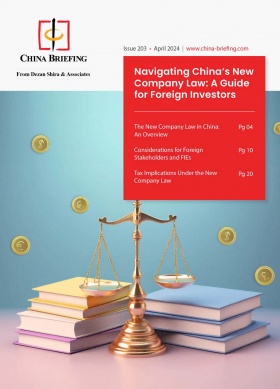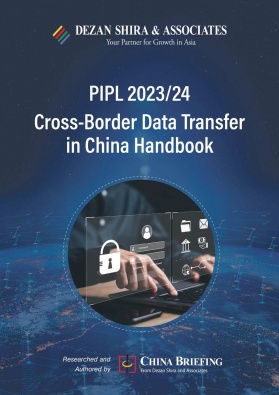US Tariff Increases on Chinese Imports – Implications for Trade and Businesses
US President Joe Biden announced significant tariff increases on Chinese imports, including electric vehicles (EVs), solar panels, and semiconductors. This move is claimed to address unfair trade practices and protect American industries. The increased tariffs are expected to impact the prices of certain products in the US and have tangible effects on Chinese exporters.
On May 14, 2024, US President Joe Biden announced new increases in trade tariffs on US$18 billion worth of Chinese imports, covering key and strategic industries such as electric vehicles (EVs), solar panels, and semiconductors.
The increased tariffs cover 14 different Chinese product categories and include hiking import duties on imported Chinese electric vehicles from 25 percent to 100 percent in a matter of months.
The announcement followed a recommendation by the US Trade Representative (USTR) to increase tariffs after the conclusion of the statutory review of the Section 301 Tariffs, which were first imposed by the Trump Administration in 2018. The USTR launched the statutory review in May 2022 in the lead-up to the fourth anniversary of the tariffs being implemented.
The directive to increase tariffs in strategic industries serves to “protect American workers and American companies from China’s unfair trade practices”, and to “encourage China to eliminate its unfair trade practices regarding technology transfer, intellectual property, and innovation”, according to the White House.
In addition to modifying tariffs on 14 categories of Chinese imports, the statutory review proposed 19 temporary tariff exclusions for solar manufacturing equipment, as well as a tariff exclusion process through which US companies can request exemptions for certain manufacturing equipment.
The USTR is soliciting public feedback on the tariff modifications and exclusion process from May 29, 2024, to June 28, 2024.
What are the new tariff hikes on Chinese goods?
On May 22, the USTR released a federal notice proposing that some of the tariff modifications on Chinese imports be implemented from August 1, 2024.
The different product categories, tariff modifications, and proposed effective dates are summarized in the table below.
| US Tariff Modifications on Chinese Imports (May 2024) | ||
| Category | Tariff | Date |
| Battery parts | Increase from 7.5% to 25% | August 1, 2024 |
| Electric vehicles | Increase from 25% to 100% | August 1, 2024 |
| Facemasks | Increase from 0 – 7.5% to 25% | August 1, 2024 |
| Lithium-ion EV batteries | Increase from 7.5% to 25% | August 1, 2024 |
| Lithium-ion non-EV batteries | Increase from 7.5% to 25% | January 1, 2026 |
| Medical gloves | Increase from 0 – 7.5% to 25% | January 1, 2026 |
| Natural graphite | Increase from 0% to 25% | January 1, 2026 |
| Other critical minerals | Increase from 0% to 25% | August 1, 2024 |
| Permanent magnets | Increase from 0% to 25% | January 1, 2026 |
| Semiconductors | Increase from 25% to 50% | January 1, 2025 |
| Ship-to-shore cranes | Increase from 0% to 25% | August 1, 2024 |
| Solar cells (whether or not assembled into modules) | Increase from 25% to 50% | August 1, 2024 |
| Steel and aluminum products | Increase from 0 – 7.5% to 25% | August 1, 2024 |
| Syringes and needles | Increase from 0% to 50% | August 1, 2024 |
The US has already imposed additional Section 301 tariffs on many of these products, including steel and aluminum products, EVs, batteries, and semiconductors. These products will see substantial tariff hikes, with the tariff on EVs quadrupling from 25 percent to 100 percent.
Meanwhile, other categories, such as natural graphite, critical minerals, and syringes and needles, were not previously subject to tariffs, but will soon be subject to import duties ranging from 25 to 50 percent.
Why is the US hiking tariffs on more Chinese imports?
The statutory review of the Section 301 tariffs claims to have found that they have been “effective in encouraging the PRC to take steps toward eliminating some of its technology transfer-related acts, policies, and practices” while reducing exposure to US individuals and businesses to these actions. It also found that the tariffs have had a “small negative impact” on the US economy, while they have positively impacted production in 10 sectors most directly affected by the tariffs.
However, in a statement issued on the same day, the USTR Katherine Tai said that “further action” was needed, as China continues to impose policies related to technology transfer, according to the review.
The tariffs also form part of the Biden Administration’s “Investing in America agenda”, and in particular, the Bipartisan Infrastructure Law (BIL) and the Inflation Reduction Act (IRA). These pieces of legislation seek to spur the growth of strategic industries in the US, notably EVs, renewable energy, and semiconductors, by providing a slew of government subsidies and incentives.
According to the White House fact sheet on the new tariffs, the Biden Administration has already enabled more than US$860 billion in investments through incentives in these key industries.
The additional tariffs on Chinese imports are therefore seen as the second half of the Biden Administration’s Investing in America agenda – providing subsidies and incentives to grow these industries on one side and protecting them by barring cheaper imports on the other.
What will be the impact of the new tariffs on US and Chinese industries?
As mentioned, the statutory review found that the existing Section 301 Tariffs have had a “small negative impact” on the US economy.
This is likely true for some of the sectors implicated in the tariffs. For certain targeted goods, China accounts for only a very small proportion of US imports. Others, such as lithium-ion batteries, account for well over half of the US’s imports and will therefore have a major impact on prices in the country, and will have a tangible impact on Chinese exporters.
Below we examine the US’s current level of reliance on the targeted goods.
EVs, batteries, and solar cells
In 2023, the US imported a total of US$385 million in EVs from China, according to data from the US Census Bureau. This accounted for just around 1.4 percent of the US’s total EV imports that year by value.
The 100 percent tariff on Chinese EVs is therefore likely to decimate whatever small foothold Chinese EV makers have managed to get in the US market and prevent them from taking significant market share as they have done in other regions. However, it is unlikely to have a noticeable impact on the American consumer or the industry as a whole, given the low level of competition from Chinese companies.
The tariff hike on solar cells is also unlikely to impact either US importers or Chinese exporters due to the tiny number of Chinese solar cells that the US imports. While China dominates the global photovoltaic industry, Chinese solar cells accounted for just 0.06 percent of the US’s total imports of tariff-targeted solar cell products in 2023.
The Biden Administration has also provided generous supply-side tax incentives for the production of solar components to shore up the domestic industry. Notably, the USTR is providing a tariff exemption on 19 solar manufacturing equipment imports from China, a means of ensuring that the tariffs do not hinder the development of US companies.
| US Imports of Li-Ion Batteries and Electric Vehicles | ||||
| Region | World total | China | ||
| Period | 2023 | Jan – Mar 2024 | 2023 | Jan – Mar 2024 |
| Commodity | Value (US$) | |||
| Electric vehicles | 25,987,903,043 | 7,344,962,027 | 384,996,698 | 30,785,802 |
| Solar cells | 19,329,273,713 | 4,678,066,450 | 11,884,710 | 3,913,721 |
| Lithium-ion batteries for EVs | 3,514,716,924 | 956,975,228 | 2,287,039,032 | 682,350,010 |
| Non-EV lithium-ion batteries | 15,033,389,341 | 3,483,448,497 | 10,779,201,130 | 2,493,400,058 |
| Battery parts (non-lithium ion) | 86,381,232 | 17,342,73 | 6,378,315 | 617,723 |
| Source: United States Census Bureau | ||||
The picture is very different when it comes to lithium-ion batteries, both EV and non-EV. These two products alone represent a substantial portion of the targeted Chinese goods, accounting for US$13 billion out of the total US$18 billion in tariffs. In 2023, the US imported a total of US$2.3 billion in lithium-ion batteries for EVs from China, constituting 65 percent of the US’s imports. Meanwhile, the US also imported a total of US$10.9 billion in non-EV lithium-ion batteries from China in the same year, representing nearly 72 percent of all US imports.
With the tariffs on these products set to rise to 25 percent on August 1, 2024 (for EV batteries) and January 1, 2026 (for non-EV batteries), the prices of US-made EVs may increase as many US carmakers remain reliant on Chinese imports for their supply, and may have to turn to more expensive alternatives.
The Biden Administration claims it has invested enough in the domestic battery supply chain to “build a sufficient domestic industrial base”. However, even with the government incentives, it may take many years for the US’s domestic industry to catch up with China’s, and in the short term, this may lead to higher prices for end consumers.
On the other hand, the impact on Chinese battery exporters is likely to be less pronounced, as the US makes up a relatively smaller proportion of China’s total battery exports.
Steel and aluminum products
The new tariff hikes include increasing duties on steel and aluminum imports from China to 25 percent in August 2024. Steel and aluminum products were already subject to Section 301 tariffs, albeit only ranging from 0 to 7.5 percent.
As with the other industries targeted by the tariffs, the Biden Administration is seeking to boost the development of the US’s domestic steel and aluminum production industries, having recently announced US$6 billion in investment into clean manufacturing projects. The US alleges that the Chinese government’s subsidies and incentive policies for the steel and aluminum industries are leading to artificially low-priced products entering the country, undermining the domestic industry. The tariffs are therefore meant to “shield” the US industries from these effects.
However, Chinese-produced steel and aluminum only make up a tiny fraction of the US’s total imports. Per data from the US Department of Commerce, the US imported a total of 5.5 million metric tons of aluminum products and 25.6 million tons of steel products in 2023, of which Chinese imports accounted for just 3.6 and 2.2 percent, respectively. Canada, by comparison, supplied 56.3 percent of the US’s aluminum imports and 24.4 percent of the US’s steel imports in 2023.
| US Imports of Steel and Aluminum Products for Domestic Consumption | ||||
| Region | World total | China | ||
| Period | 2023 | Jan – Apr 2024 | 2023 | Jan – Apr 2024 |
| Commodity | Volume (metric tons) | |||
| Aluminum | 5,460,996.65 | 1,348,961.42 | 197,872.96 | 60,399.35 |
| Steel | 25,583,087.1 | 2,315,696.9 | 553,406.2 | 645,955.5 |
| Source: United States Department of Commerce, Enforcement and Compliance; S&P Global Market Intelligence | ||||
Semiconductors, critical minerals, and materials
Semiconductors have become one of the key points of contention between the US and China in recent years. The US has sought to hamper the development of China’s domestic semiconductor industry by imposing export and investment restrictions on China, including sweeping export controls on advanced computing semiconductors, semiconductor manufacturing equipment, and supercomputing items to China in October 2023.
At the same time, semiconductor manufacturing is another strategic development industry for the Biden Administration. The CHIPS and Science Act passed in August 2022 provides US$39 billion in direct incentives for the industry and a 25 percent investment tax credit for semiconductor companies.
Chinese-sourced semiconductors and semiconductor components still account for a relatively small amount of the US’s imports, standing at around 5.6 percent by import value in 2023.
| US Imports of Semiconductors and Critical Minerals | ||||
| Region | World total | China | ||
| Period | 2023 | Jan – Mar 2024 | 2023 | Jan – Mar 2024 |
| Commodity | Value (US$) | |||
| Semiconductors | 41,562,532,248 | 9,653,885,657 | 2,322,346,607 | 428,766,475 |
| Natural graphite | 156,641,355 | 28,582,242 | 110,058,390 | 16,302,909 |
| Critical minerals | 5,235,558,147 | 1,171,376,167 | 238,703,586 | 70,560,011 |
| Permanent magnets | 543,488,251 | 124,143,800 | 434,671,758 | 94,532,708 |
| Source: United States Census Bureau | ||||
Overall, the US does not have a heavy reliance on the import of critical minerals from China, meaning that the tariff hike on these goods will have a minimal impact on US companies and consumers. Among the critical minerals targeted by the tariffs, China accounted for just 4.6 percent of the US’s total imports by value in 2023. However, certain materials account for a much higher proportion. For instance, in 2023, China accounted for 41.6 percent of the US’s supply of chromium powder and 45.9 percent of its imports of tungstates by value.
Meanwhile, the US remains heavily reliant on China for its supply of natural graphite, an important material used in the production of semiconductors, electronics, and batteries. In 2023, China supplied 70.3 percent of the US’s imports of the tariff-targeted natural graphite products by value.
In addition, Chinese permanent magnets – critical in the manufacturing of a broad range of products from computers to car motors and brake systems – accounted for almost 80 percent of the US’s imports by value in 2023.
The hike in tariffs on these imports (to 25 percent in August 2024 for critical minerals and January 2026 for permanent magnets and natural graphite) will therefore force US companies to either increase costs or quickly increase imports from alternative sources, such as Brazil or South Africa. The result will likely be higher costs for the end consumer in the US.
Medical products
The US’s decision to considerably raise tariffs on personal protective equipment (PPE) – namely face masks and medical gloves – as well as syringes and needles, stems from an anxiety over reliance on China for these essential products in the wake of the COVID-19 pandemic.
The impact of the tariffs will be felt the hardest on certain types of face masks and respirators, which will be subject to a 25 percent tariff (up from between 0 and 7.5 percent) in August 2024. In 2023, 68.1 percent of the value of its face mask imports was from China, meaning the tariffs will have a significant impact on the costs of these goods in the US.
The impact will be lesser on medical gloves, syringes, and needles, for which China accounts for a relatively smaller – but still significant – proportion of imports. In 2023, almost a quarter of the US’s import value of medical gloves came from China, while for needles and syringes, the import value accounted for almost 10 percent.
| US Imports of Medical Products | ||||
| Region | World total | China | ||
| Period | 2023 | Jan – Mar 2024 | 2023 | Jan – Mar 2024 |
| Commodity | Value (US$) | |||
| Face masks and respirators of textiles | 10,820,206 | 3,422,404 | 7,373,542 | 2,712,244 |
| Medical gloves | 1,598,662,167 | 402,203,546 | 397,786,963 | 108,375,560 |
| Syringes & needles | 2,020,209,193 | 533,117,287 | 199,641,887 | 65,966,133 |
| Source: United States Census Bureau | ||||
Syringes and needles will see a considerable tariff hike, increasing from 0 to 50 percent in August 2024, while tariffs on rubber medical and surgical gloves will increase from 7.5 percent to 25 percent in January 2026.
The White House fact sheet states that the tariff rate increases on these goods will help to build the US’s domestic manufacturing capacity, as American companies are currently being out-competed by cheaper supplies from China. During the COVID-19 pandemic, a shortage of these essentials spurred the rise of nascent domestic manufacturers. However, many of these companies have since closed due to competition from Chinese importers.
The high volume of imports for face masks in particular, and the short timeframe for the imposition of the tariffs, will mean a significant increase in costs for hospitals and clinics in the short term. Domestic producers may also not be able to offer these products at as low a price as Chinese manufacturers can, due to the higher labor and production costs in the US.
China’s countermeasures to US actions
It is also important to account for potential countermeasures from China. In a statement released after the US’ announcement of the tariffs, China’s Ministry of Commerce (MOFCOM) stated that China would take “resolute measures to defend its rights and interests”.
In fact, China has already imposed countermeasures in retaliation for US actions. Last year, on August 1, MOFCOM began imposing export restrictions on 14 gallium and germanium items, key metals used for the production of chips and other electronic components, in order to “safeguard national security and interests”.
In April 2024, MOFCOM announced temporary anti-dumping measures on propionic acid (PA) imports from the US. US companies importing PA will henceforth be required to provide tariff deposits at a rate of 43.5 percent to China Customs.
Further, on May 19, MOFCOM announced an anti-dumping investigation into imported polyformaldehyde (POM) copolymers originating in the EU, the US, Taiwan, and Japan. The probe, which is seen as an attempt to deter further US and EU actions, could result in anti-dumping tariffs on these goods.
Long-term implications for US-China trade relations
The tariff increases on Chinese imports are likely to exacerbate the economic divide between the US and China, potentially igniting a second trade war. However, it is important to note that China has thus far adopted a more measured approach to its countermeasures, avoiding direct tit-for-tat retaliation. This restraint suggests that the two countries may avoid a repeat of the 2018 trade tensions, as they seek to avoid the economic repercussions experienced during the previous conflict.
In certain sectors, the new tariffs and countermeasures will result in higher production costs and disrupted supply chains. US companies that rely on Chinese imports for critical components will face increased costs, which could be passed on to consumers. Conversely, Chinese exporters will find their competitiveness in the US market significantly reduced, leading to potential revenue losses and the need to explore alternative markets.
The tariffs may also accelerate trends in global supply chains, such as re-shoring, near-shoring, and diversification. US companies might increasingly look to bring manufacturing back to the US or seek alternative suppliers from other countries to mitigate the risk of future tariffs. Similarly, Chinese companies may seek to circumvent the tariffs by setting up manufacturing operations in third countries or even starting domestic production within the US. These actions, however, could prompt the US to introduce further preventative measures to close such loopholes.
The Biden Administration had previously suggested that the US might lift some tariffs on Chinese goods to fight inflation. The decision to increase tariffs instead reflects the evolving trade relationship between China and the US over the past two years, despite improvements in diplomatic dialogue. It also underscores the increasingly critical role of renewables and high-end technologies in national security considerations.
About Us
China Briefing is one of five regional Asia Briefing publications, supported by Dezan Shira & Associates. For a complimentary subscription to China Briefing’s content products, please click here.
Dezan Shira & Associates assists foreign investors into China and has done so since 1992 through offices in Beijing, Tianjin, Dalian, Qingdao, Shanghai, Hangzhou, Ningbo, Suzhou, Guangzhou, Dongguan, Haikou, Zhongshan, Shenzhen, and Hong Kong. We also have offices in Vietnam, Indonesia, Singapore, United States, Germany, Italy, India, and Dubai (UAE) and partner firms assisting foreign investors in The Philippines, Malaysia, Thailand, Bangladesh, and Australia. For assistance in China, please contact the firm at china@dezshira.com or visit our website at www.dezshira.com.
- Previous Article Greater Bay Area (GBA) IIT Subsidy Kicked Off in Shenzhen 2024
- Next Article Highlights from China FM Wang Yi’s Visit to New Zealand and Australia (Updated)









